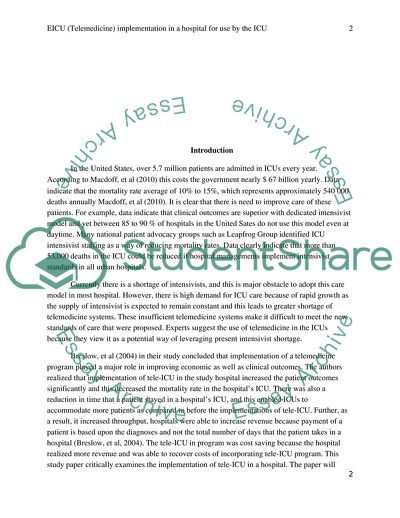Cite this document
(EICU(Telemedicine) implementation in a hospital for use by the ICU Research Paper, n.d.)
EICU(Telemedicine) implementation in a hospital for use by the ICU Research Paper. Retrieved from https://studentshare.org/nursing/1757138-eicutelemedicine-implementation-in-a-hospital-for-use-by-the-icu
EICU(Telemedicine) implementation in a hospital for use by the ICU Research Paper. Retrieved from https://studentshare.org/nursing/1757138-eicutelemedicine-implementation-in-a-hospital-for-use-by-the-icu
(EICU(Telemedicine) Implementation in a Hospital for Use by the ICU Research Paper)
EICU(Telemedicine) Implementation in a Hospital for Use by the ICU Research Paper. https://studentshare.org/nursing/1757138-eicutelemedicine-implementation-in-a-hospital-for-use-by-the-icu.
EICU(Telemedicine) Implementation in a Hospital for Use by the ICU Research Paper. https://studentshare.org/nursing/1757138-eicutelemedicine-implementation-in-a-hospital-for-use-by-the-icu.
“EICU(Telemedicine) Implementation in a Hospital for Use by the ICU Research Paper”. https://studentshare.org/nursing/1757138-eicutelemedicine-implementation-in-a-hospital-for-use-by-the-icu.


